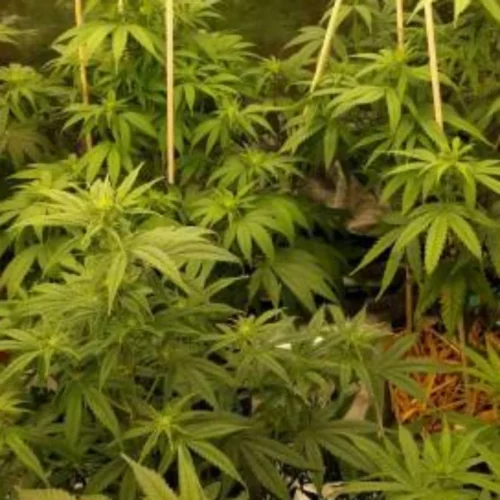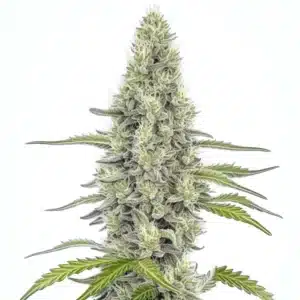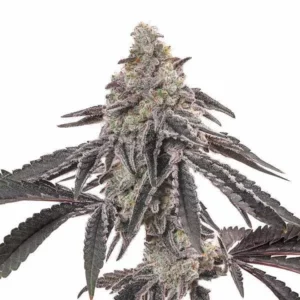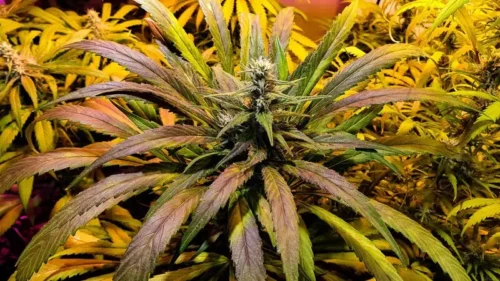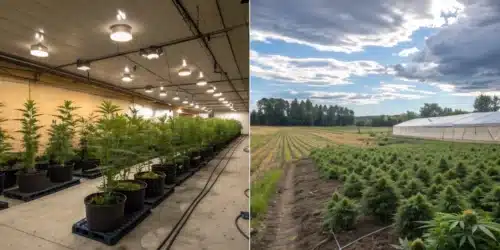Introduction to Male Weed Plants
Cannabis cultivation is a nuanced art that blends science with tradition, and recognizing the function of male weed plants is key to this process. Unlike female plants, known for their bud production, male plants are often misunderstood and underestimated. This article will highlight the biology, significance, and management of male weed plants, clarifying their part in cannabis horticulture and examining their potential beyond just pollen production.
Promos & Deals
The Biology of Cannabis: Male vs. Female
When embarking on the cultivation of cannabis, the distinct biological differences between male and female plants, including the specific role of male weed plants, is paramount. This knowledge not only informs the approach to breeding but also impacts the overall yield and quality of the harvest. Furthermore, are there male and female plants in cannabis cultivation? Yes, cannabis plants exhibit sexual differentiation, and understanding this is vital for growers.
Genetic and Morphological Differences
At the genetic level, cannabis plants are typically determined to be male or female by their chromosomes. Female plants have two X chromosomes (XX), while males, referred to as male weed plants, possess an X and a Y chromosome (XY). This genetic distinction lays the groundwork for the physical and functional differences observed between the sexes.
Morphologically, male weed plants develop pollen sacs, which are crucial for the reproduction process. These sacs open to release pollen, necessary for fertilizing the female plant’s ovules. On the other hand, female plants produce flowers rich in cannabinoids, such as THC and CBD, which are the primary interest for most cannabis growers and consumers.
Role in Cannabis Cultivation
For those cultivating cannabis with the intent of harvesting potent buds for consumption, female plants are the primary focus. This is because female flowers, or buds, contain the highest concentrations of cannabinoids and terpenes, which are responsible for the plant’s effects and flavors. Male weed plants, while lower in these compounds, are invaluable for breeding purposes. They carry genetic information that can be used to create new strains with desired traits, such as increased resilience to pests or improved cannabinoid profiles.
The Importance of Both Sexes in Cultivation
While cultivation efforts primarily concentrate on female plants for their cannabinoid-rich flowers, male plants hold significant importance. Their genetic contributions are vital for breeding programs, driving strain development and maintaining biodiversity within the cannabis species. Utilizing the distinct biological traits of both male and female plants, especially male plants, can enhance cultivation success, whether the objective is high-quality bud production, seed creation, or genetic preservation.
Identifying Male Weed Plants
In the world of cannabis cultivation, the ability to accurately identify male weed plants holds paramount importance, especially for those aiming to produce high-quality, seedless cannabis, also known as sinsemilla. Male weed plants, although less coveted than their female counterparts for THC production, play a crucial role in the breeding process, making male marijuana plant identification a crucial skill for any cultivator. Let’s delve into how to spot male weed plants and understand the nuances that set them apart.

Visual Identification: The First Line of Defense
The most straightforward method to identify male plants is through visual inspection, which hinges on spotting distinctive features that manifest as the plants enter their pre-flowering phase. Typically, male plants will develop small, ball-like structures at the nodes (the points where branches meet the stem), which are the pollen sacs. These sacs will eventually open to release pollen. In contrast, female plants develop pistillate flowers, which are identifiable by their white, hair-like stigmas intended to catch pollen. Recognizing these characteristics early on can significantly impact a grower’s ability to manage their crop effectively.
The Pre-flowering Stage: A Critical Window
Identification efforts should be concentrated during the pre-flowering stage, occurring approximately six to eight weeks from germination. It is during this phase that the sexual differentiation of cannabis plants becomes evident. Male plants often show their sex earlier than females, providing a critical window for cultivators to take action—whether that be isolation, removal, or preparation for breeding.
The timing and signs of this stage is essential for effective crop management. Growers should look for the development of pre-flowers at the nodes. Male pre-flowers are typically small, round, and will eventually develop into the aforementioned pollen sacs. On the other hand, female pre-flowers are more elongated and feature the tell-tale pistils.
Why Early Identification Matters
The early identification of male weed plants is vital for several reasons. For cultivators focused on producing consumable cannabis flower, removing male plants from the grow area before they release pollen can prevent the fertilization of female plants, thus ensuring the production of high-quality, seedless buds. For breeders, early identification allows for the selective breeding of plants, enabling them to control genetic outcomes more precisely.
Moreover, the presence and proportion of male weed plants in a grow area can offer insights into seed genetics and overall plant health. It allows cultivators to make informed decisions about their growing strategy, optimizing for either seed production or flower quality depending on their goals.
Incorporating Male Weed Plants into Cultivation Strategy
While the focus may often be on identifying and removing male weed plants to prevent unwanted fertilization, it’s worth noting that these plants are not without their uses. Beyond their essential role in breeding and genetics, male cannabis plants can contribute to a diverse array of products, including hemp fiber, concentrates, and even composting materials.
Identifying male weed plants is a key skill in cannabis cultivation, influencing everything from the quality of the final product to the efficiency of breeding programs. By mastering visual identification techniques and recognizing the importance of the pre-flowering stage, cultivators can make informed decisions that align with their goals, ensuring the best use of both male and female cannabis plants in their operations.
The Significance of Male Cannabis Plants in Breeding
Breeding cannabis plants is an intricate science that relies on recognizing the unique roles and genetic contributions of both male and female plants. In cannabis cultivation, male cannabis plants, often referred to as male weed plants, play an essential part, particularly in the breeding process. While female plants are valued for their cannabinoid-rich flowers, male weed plants are vital for ensuring genetic diversity and shaping the future of cannabis strain development.
Genetic Contributions of Male Plants
Male weed plants contribute half of the genetic material to their offspring. This genetic contribution is vital for the creation of new cannabis strains with desired traits, such as increased resistance to pests and diseases, improved yield, and enhanced cannabinoid profiles. By carefully selecting male plants based on their genetic qualities, breeders can influence the direction of strain development, introducing new flavors, aromas, and effects into the cannabis gene pool.
The pollen from male weed plants carries the potential for endless genetic combinations. When a male plant pollinates a female, the seeds produced inherit traits from both parents. This genetic shuffle is the foundation of breeding programs aimed at enhancing specific characteristics. For example, a male plant exhibiting strong resistance to mold can be bred with a female known for her high THC content, potentially resulting in offspring that inherit both beneficial traits.
Crossbreeding and Strain Development
Crossbreeding plays a pivotal role in the evolution of cannabis strains. Through the careful selection of male and female plants, breeders can create hybrids that express the best qualities of both parent strains. Male weed plants are especially valuable in this process due to their ability to pollinate multiple females, thereby producing a wide variety of genetic combinations for selection.
This genetic diversity is essential for the development of new strains that meet the ever-changing demands of the cannabis market. By experimenting with different male and female pairings, breeders can explore new territories in cannabis genetics, leading to innovations in flavor, potency, and medicinal properties.
The Importance of Pollination
Pollination, the process by which male plants fertilize female plants, is central to the creation of new cannabis seeds. Without the pollen from male weed plants, the genetic mixing that fuels strain diversity and improvement would not be possible. Controlled pollination allows breeders to produce seeds with predictable characteristics, making it easier to cultivate cannabis plants that meet specific criteria.
Moreover, the timing and mechanics of pollination is crucial for successful breeding. Male plants typically begin to produce pollen sacs as they mature. Monitoring these plants closely enables breeders to collect pollen at the optimal time, ensuring that it can be used to fertilize female plants under controlled conditions. This level of precision is essential for achieving the desired outcomes in a breeding program.
In conclusion, male weed plants are indispensable to the cannabis breeding process. Their genetic contributions enable the creation of new and improved strains, contributing to the genetic diversity that makes cannabis cultivation both challenging and rewarding. By appreciating and harnessing the potential of male cannabis plants, breeders can continue to push the boundaries of what is possible in cannabis horticulture, ensuring a rich and varied future for this remarkable plant.

Management and Isolation Strategies for Male Weed Plants
When it comes to the cultivation of cannabis, the management and isolation of male weed plants are crucial steps for growers aiming to produce high-quality buds or to engage in selective breeding. The presence of male weed plants in a cannabis garden can have significant implications for both recreational and medicinal cannabis production. By applying effective management and isolation strategies, cultivators can utilize the advantages of male plants while reducing the risk of unwanted pollination. This section explores practical methods for handling male weed plants, highlighting the importance of isolation techniques and the strategic benefits they bring to cannabis cultivation.
Isolating Male Plants for Controlled Breeding
The isolation of male weed plants is a foundational strategy for growers focusing on breeding programs. Isolation does not merely involve physical separation; it encompasses a series of controlled environments designed to capitalize on the genetic contributions of male plants. By selectively isolating males, breeders can carefully collect pollen, ensuring that only desirable traits are passed on to the next generation. This methodical approach to breeding allows for the enhancement of specific cannabis strains, improving aspects such as THC content, flavor profiles, and disease resistance.
Setting Up a Separate Space
Creating a dedicated space for male weed plants is paramount in controlled breeding and pollen collection. This can be as simple as designating separate rooms within an indoor grow operation or as complex as using greenhouses or isolated outdoor areas for larger-scale cultivations. The key is to maintain environmental control, with particular attention to air flow, to prevent pollen from contaminating female plants unintentionally. Proper ventilation systems, air filters, and even negative air pressure setups can be employed to contain pollen within the designated male area.
Techniques for Safe Pollen Collection
Collecting pollen from male weed plants is an art that requires precision and care. Once male plants begin to produce pollen sacs, growers can gently shake these sacs over a clean, smooth surface or use a small brush to transfer pollen into storage containers. Pollen can be stored in airtight containers and refrigerated for short-term use or frozen for long-term storage, allowing for strategic breeding at later dates. This process not only maximizes the utility of male plants but also provides breeders with the tools to experiment with genetic combinations, leading to the creation of unique and tailored cannabis strains.
Preventing Unwanted Pollination
For cultivators focused on producing sinsemilla (seedless cannabis), preventing the pollination of female plants is critical. Beyond isolating male plants, additional precautions include regular monitoring of cannabis crops for hermaphrodites or unidentified male plants that can emerge unexpectedly. Removing male plants from proximity to female plants is a straightforward approach, but vigilance is necessary to detect any signs of male characteristics early in the growth cycle. Some growers opt for feminized seeds to reduce the likelihood of male plants, though this does not eliminate the need for careful observation.
Strategies for Outdoor and Indoor Growers
Outdoor growers face unique challenges in isolating male weed plants due to factors such as wind and the presence of wild cannabis plants. Strategies such as planting buffer zones of non-cannabis plants can help, but indoor cultivation offers more control over the environment and isolation practices. Indoor growers can utilize separate rooms or tents with controlled air systems to ensure that pollen remains contained.
Utilizing Male Plants: Beyond Breeding
While often overlooked, male cannabis plants have various applications beyond their role in reproduction. From the production of hemp fiber to making hash, male plants can be valuable resources in their own right.
How to Identify and Respond to Hermaphroditism in Cannabis Plants
The nuances of cannabis plant sexuality is a cornerstone of successful cultivation, and this includes recognizing and managing hermaphroditism. When cannabis plants develop both male and female sex organs, they’re considered hermaphrodites. This condition can greatly affect growers, particularly those focused on producing high-quality, seedless cannabis flowers. Combining information on hermaphroditism with insights into male cannabis plants provides a thorough view of cannabis reproduction and its influence on cultivation.
Identifying Hermaphroditism
Hermaphroditism in cannabis can manifest in two ways: plants may develop both male and female flowers, or, more subtly, male pollen sacs may appear on otherwise female plants. Identifying these signs early is crucial. Male pollen sacs are typically found in clusters, while female flowers have distinctive white or orange hairs (stigmas) meant to catch pollen.
For growers focused on the cultivation of male weed plants for breeding or other purposes, monitoring for hermaphroditism is equally vital. A hermaphrodite plant can unintentionally pollinate itself and other plants, leading to a crop full of seeds, which is particularly problematic for those cultivating for flower quality.
Responding to Hermaphroditism
Once a hermaphrodite plant is identified, the response will largely depend on the grower’s goals:
- Isolation: If the plant is valuable for breeding purposes, isolating it can prevent unwanted pollination. This approach allows growers to collect pollen or seeds without compromising the integrity of female plants intended for flower production.
- Removal: In many cases, the simplest response is to remove the hermaphrodite plant from the grow area entirely. This is especially true in settings where seed production is not the goal, as even a single hermaphrodite can significantly impact the quality of the harvest.
- Monitoring and Management: For those cultivating male weed plants specifically, regular monitoring for hermaphroditism is crucial. This ensures that male plants used for breeding or other purposes remain true to their intended function without introducing unexpected genetic variability.
Preventing Hermaphroditism
While genetic predisposition plays a significant role in hermaphroditism, stress factors such as inconsistent light cycles, physical damage, and extreme environmental conditions can also induce this trait. For growers, maintaining a stable and controlled environment is key to minimizing the risk. This includes adhering to strict light schedules, avoiding mechanical damage, and ensuring optimal nutrition and hydration.
For those focusing on cultivating male weed plants, whether for breeding, seed production, or other uses, managing hermaphroditism is essential to maintaining the health and productivity of their crops. Through careful monitoring and proactive management techniques, growers can ensure the purity and quality of their cannabis plants, regardless of gender.
Cultivating for Seed Production
Focusing on the cultivation of male weed plants for seed production is a complex process that requires in-depth knowledge of cannabis biology and precise management practices. In this section, we’ll explore the techniques and advantages of growing male plants specifically for their seeds.





